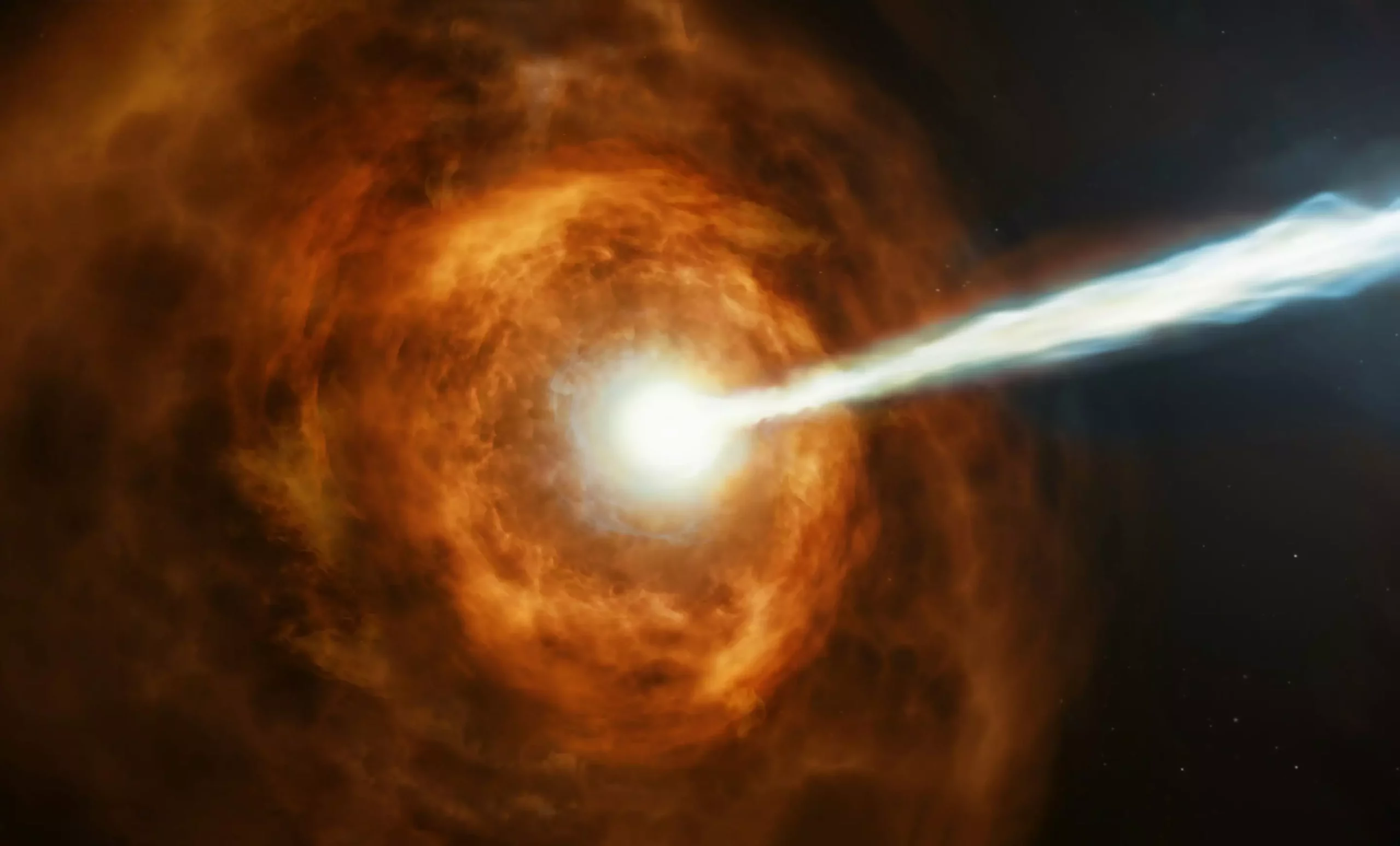Einstein’s theory of relativity is built upon two fundamental assumptions. The first assumption is that the laws of physics are consistent for all observers moving in a straight line with no acceleration. This concept, known as an “inertial frame of reference,” was inspired by the work of Dutch physicist Hendrik Lorentz in the late 1800s. The second assumption is that the speed of light remains constant for all observers in an inertial reference frame. This means that no matter how fast an observer is moving or in what direction, light will always be perceived to travel at the speed of “c,” approximately 300,000 kilometers per second.
In a recent study conducted by a research group from China, the focus was on examining Lorentz invariance at extremely high energy levels. By observing the afterglow of the most powerful gamma-ray burst ever recorded, designated as 221009A, researchers aimed to determine if different frequencies of light arrived at Earth at varying speeds. This phenomenon, known as “photon dispersion,” would suggest a deviation from Lorentz invariance if detected. The study utilized data collected from the gamma-ray burst detected by the Large High Altitude Air Shower Observatory (LHAASO) in Sichuan, China, located at an altitude of 4,410 meters above sea level.
The analysis conducted by the research group found no evidence of significant violations of Lorentz invariance in the arrival times of gamma-ray photons with different frequencies. This result implies that at the energy levels observed during the gamma-ray burst, Lorentz invariance holds true. The study also established new lower limits on the energy levels where quantum gravity effects may manifest, further refining our understanding of fundamental physics principles. The researchers concluded that future observations of high-energy prompt emissions from gamma-ray bursts could provide additional insights into Lorentz invariance and its implications.
The search for Lorentz invariance at high energy levels is of particular interest due to its relevance to theories of quantum gravity. Some models predict that at extremely high energies, spacetime may exhibit non-empty characteristics, challenging the traditional understanding of empty vacuum as proposed in classical physics. The recent study’s findings contribute to the ongoing dialogue surrounding the behavior of fundamental physical laws at the Planck scale, where quantum mechanics may play a significant role in shaping our understanding of the universe.
As the field of astrophysics continues to advance, researchers have emphasized the importance of exploring Lorentz invariance at varying energy levels, particularly in the context of gamma-ray bursts. By conducting more detailed observations of high-energy prompt emissions from these cosmic events, scientists hope to further probe the limits of Lorentz invariance and uncover potential deviations from established theories. The results of such studies have the potential to revolutionize our understanding of the fundamental laws of physics and the nature of spacetime itself.
The recent study conducted by the research group from China sheds light on the behavior of light at extreme energy levels and its implications for Lorentz invariance. By demonstrating the consistency of the speed of light across different frequencies, the researchers have contributed valuable insights to the ongoing conversation about fundamental physics principles. This research serves as a crucial stepping stone towards unraveling the mysteries of the universe at its most fundamental level.


Leave a Reply